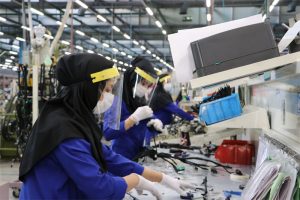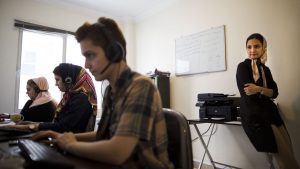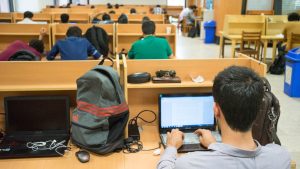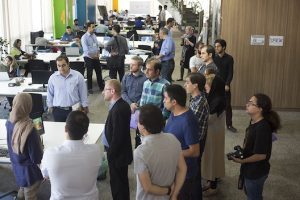Iran’s AI Infrastructure: A Five-Layer Analysis of Sovereignty and Strain
Strategic Briefing Document
Date: November 2025
Audience: Global Investors, Corporate Research Divisions, Technology Strategists
Introduction: The Paradox of Isolation
For the global investor or technology strategist, the Iranian Artificial Intelligence (AI) ecosystem presents a complex paradox that defies standard emerging market classifications. It is a market characterized by a stark dichotomy: a surprisingly resilient, self-sufficient physical infrastructure foundation that is simultaneously under critical strain from deep-seated human and financial capital challenges.
Unlike its regional peers—Turkey, Saudi Arabia, and the UAE—who have built their AI capabilities through massive foreign direct investment and partnerships with global tech giants (AWS, Google, Microsoft), Iran has been forced by geopolitical isolation and international sanctions to take a different path. It has constructed a “sovereign” digital ecosystem. The data reveals a nation that has successfully built the warehouse for the digital economy but is struggling to fill it with the necessary high-quality fuel (data) and is losing the architects (talent) required to maintain it.
This analysis utilizes a rigid Five-Layer Framework to deconstruct the ecosystem. We move from the physical hardware up to the human capital, grounding every insight in hard data. The objective is to move beyond the headlines and understand the structural mechanics of Iran’s AI potential. The central narrative emerging from the numbers is clear: Iran possesses the capacity to compute, but lacks the capital—both financial and human—to compete.
1. Layer 1: The Physical Base – The Fortress in the Desert
To understand the foundation of Iran’s AI ecosystem, you must first unlearn the standard model of the global internet. In London or Singapore, the “cloud” is an abstract concept—an infinite resource provided by American giants like Amazon Web Services (AWS) or Microsoft Azure.
In Tehran, the cloud is not abstract; it is heavy, physical, and fortified.
Layer 1 is the story of a “Digital Fortress.” Forced into isolation by decades of sanctions, Iran could not rely on the global grid. Instead, it was compelled to dig deep and build a sovereign parallel structure—a “National Information Network” that could survive even if the cables to the outside world were cut.
The $2.52 Billion Bunker
The raw data reveals the sheer scale of this defensive construction. By 2025, the Iranian Data Center market has swelled to $2.52 billion.
This number tells a story of “forced evolution.” While regional peers like the UAE outsourced their infrastructure to Silicon Valley, Iran had to build its own. This massive market cap isn’t driven by speculative tech valuation; it is driven by existential necessity. With a CAGR of 7.27%, the physical pouring of concrete and racking of servers is growing faster than the software sector itself. The ecosystem is building the bunker before it fully knows what weapons (software) it will store inside.
The Guardians of Sovereignty
Inside this fortress, a specific cast of characters has emerged to replace the missing Western giants. These are not scrappy startups; they are national champions backed by old money.
- ArvanCloud has emerged as the tactical leader, effectively becoming the “AWS of Iran.” They provide the critical infrastructure-as-a-service (IaaS) that keeps the digital economy breathing.
- Fanap Infra, a subsidiary of the powerful Pasargad Financial Group, illustrates the marriage of finance and technology. When a nation’s banking system is cut off from SWIFT, its internal data integrity becomes paramount. Fanap is the result of the banking sector underwriting the country’s digital survival.
- Alongside Afranet, Asiatech, and Pars Online, these entities form a cartel of resilience. For an investor, they represent the lowest-risk asset class in the country: they are the landlords of the Iranian internet.
The Silicon Smugglers: How Gamers Saved AI
However, a fortress needs power, and in the world of AI, power means chips—specifically, high-performance GPUs from NVIDIA. Here lies the central conflict of Layer 1. Sanctions have firmly bolted the front door against the import of enterprise-grade hardware (like the H100 clusters found in Dubai).
So, the ecosystem climbed through the window.
The most fascinating data point in our analysis is the $1.37 billion Gaming Hardware market. This is not just about teenagers playing video games; it is the “gray market” proxy for AI compute power.
GPU-Related Hardware Market Comparison (2025 Projections)
| Market Segment | Iran | Turkey | Iraq |
|---|---|---|---|
| Gaming Hardware Revenue | $1.37 Billion | $2.18 Billion | $561.76 Million |
| Gaming Hardware CAGR (2025-2030) | 8.71% | 9.01% | 6.82% |
| Computing Hardware Revenue | $1.66 Billion | $3.59 Billion | $670.85 Million |
| Computing Hardware CAGR (2025-2030) | 3.63% | 3.37% | 2.03% |
| Data Center Revenue | $2.52 Billion | — | $437.12 Million |
| Data Center CAGR (2025-2030) | 7.27% | — | 6.84% |
Projected Gaming Hardware Users (2030)
| Country | Projected Users (Millions) |
|---|---|
| Iran | 2.54 M |
| Turkey | 2.41 M |
| Iraq | 1.01 M |
In a constrained economy, a high-end consumer graphics card (like an RTX 4090) is a dual-use asset. By day, it might render pixels; by night, it runs inference for local Language Models. The data suggests a massive, decentralized influx of silicon entering the country through porous trade routes in Dubai and Turkey. This $1.37 billion flow of hardware is the silent engine of Iran’s AI capacity. It means that while Iran lacks the monolithic supercomputers of the West, it possesses a vast, distributed “mosquito fleet” of computing power, stitched together from consumer tech to keep the AI dream alive.

Layer 1 Verdict: Iran has successfully built a sovereign physical base that is surprisingly robust. It is a hardware ecosystem defined by ingenuity under pressure—relying on domestic “Bunker” data centers for storage and a decentralized army of “Gray Market” GPUs for compute.
2. Layer 2: The Connectivity Layer – Broad Reach, Constrained Speed
If Layer 1 is the warehouse, Layer 2 is the road network transporting the goods. The data paints a picture of a network that has achieved impressive breadth (reach) but suffers from bottlenecks in depth (speed/bandwidth).
Penetration Rates: A Digital-First Population
- National Internet Penetration (2025): 80.3%
- Mobile Internet Penetration (2025): 88.4%
- Narrative of the Numbers: With nearly 90% of the population connected via mobile, the user base for AI applications (fintech, e-commerce, health-tech) is virtually the entire adult population. This penetration rate rivals developed European markets. It indicates that the friction for consumer adoption of AI services is nearly zero. The market is digitally literate and connected.
AI Adoption by Sector
Sector 2025 Revenue (USD M) CAGR/Trend Health IT $563.6 8.97% (2025-2029) FinTech (Smart Finance) $218.7 12.35% (2025-2029) E-Commerce (eServices) $2,600 21.79% (2025-2029) AI Dev Tool $41.5 5.43% (2025-2030)
Iranian Technology Corporate & Startup Landscape (2025)
| Sector | 2025 Revenue | Notable Companies | User Numbers / Penetration |
|---|---|---|---|
| FinTech & Payments | $218.69M | Pasargad Bank, Saman Bank, Behpardakht | Not listed |
| Health IT | $563.56M | Tivan, DrDr, Arian Salamat | Not listed |
| E-commerce | $13.55B | Digikala, Bamilo, Snapp Market | Not listed |
| Online Services | $2.60B | Digikala, Cafe Bazaar | Not listed |
| Ride-Hailing | $165.85M | Snapp!, Tap30 | 24M by 2030 |
| Logistics | $4.98B | Post Co., Alopeyk, Iran Express | Not listed |
The Speed Bottleneck: ~22 Mbps
The strength of penetration is immediately undercut by the quality of the connection.
- Average Broadband Speed (2025): ~22 Mbps.
- Strategic Implication: This is a critical constraint for training large AI models or deploying real-time, data-heavy inference applications (like autonomous driving or industrial IoT). In an era where global competitors operate at gigabit speeds, a 22 Mbps average limits the ecosystem to “light” AI applications. It forces developers to optimize for high latency and low bandwidth, technically constraining the complexity of models that can be deployed to the edge.
The 5G Modernization Effort
- Status: Live in major hubs (Tehran, Mashhad, Isfahan).
- Coverage: Estimated 30-40% of the urban population.
- Operators: MCI, Irancell, Rightel.
- Analysis: The rollout of 5G is the government’s attempt to bypass the copper-wire limitations of the fixed broadband network. Achieving 30-40% urban coverage is a significant milestone, suggesting that the “speed gap” is closing in metropolitan business districts. However, the disparity between a 5G-connected business in North Tehran and the rest of the country creates a “two-speed” digital economy, limiting the scalability of nationwide AI solutions that require high bandwidth.

Layer 2 Verdict: The network connects everyone, but the “pipes” are too narrow for industrial-grade data transfer, forcing a reliance on edge computing and localized processing.
3. Layer 3: The Software & Data Layer – A Critical Data Quality Gap
This layer represents the “instructions and fuel” for AI. Here, we encounter the first major structural weakness of the ecosystem. While the hardware is capitalized at billions, the software tools and data quality are lagging significantly.
The Market Size Mismatch
- AI Dev Tool Software Market (2025): $41.5 million.
- Growth (CAGR): 5.43%.
Strategic Implication:
Comparison between the 2.52 billion data center market to the 41.5 million software tool market.

The software market is merely 1.6% the size of the infrastructure market. This indicates an ecosystem heavily weighted toward hosting rather than creating. The low CAGR of 5.43%—in a global industry growing at double or triple digits—suggests stagnation in the adoption of advanced, paid development tools. Iranian developers are likely relying heavily on open-source tools (PyTorch, TensorFlow) due to payment rail sanctions, limiting the revenue capture for proprietary software vendors.
The “Fuel” Problem: Data Availability vs. ML-Readiness
- Resources: Iran Open Data Center (IOD), Iran Data Portal (Syracuse Univ.).
- The Critical Finding: Source analysis explicitly states that available data consists of “statistical summaries or tables rather than annotated data for direct AI development.” It is not ML-ready.
- Narrative of the Numbers: This is the single largest technical hurdle for the ecosystem. AI does not learn from statistical summaries; it learns from raw, granular, annotated data. The lack of “ML-ready” datasets means that any AI startup in Iran must incur massive pre-processing costs. They cannot simply download a dataset and train a model; they must build the dataset from scratch.
- Investment Consequence: This increases the “Time to MVP” (Minimum Viable Product) for Iranian AI startups significantly compared to their global peers. It depresses the valuation of early-stage companies because their technical risk is higher.
Layer 3 Verdict: The ecosystem is starving for high-quality fuel. The gap between hardware capacity and software sophistication is widening.
4. Layer 4: The Operations Layer – A Strategic Intelligence Gap
For a professional investor, uncertainty is worse than negative data. Layer 4 constitutes a “Black Box” regarding the operational maturity of the market.
The Missing Metrics
- Data Status: No specific data available on MLOps maturity, CI/CD pipeline adoption, model monitoring, or orchestration usage (Kubernetes).
- Strategic Implication: In mature markets (US, EU, China), we can quantify the efficiency of engineering teams by looking at DORA metrics or MLOps adoption rates. In Iran, this data does not exist.
- Why This Matters:
- Scalability Risk: Without visibility into orchestration tools (like Kubernetes), we cannot assess if Iranian AI applications can scale dynamically to handle millions of users without crashing.
- Hidden Technical Debt: The absence of standardized MLOps practices usually implies high levels of manual intervention in model deployment. This suggests that “AI rot” (model drift) is likely a significant, unmanaged issue in deployed applications.
- Due Diligence Barrier: For an external observer, this intelligence gap makes it nearly impossible to value the technical IP of a company accurately. You are buying code, but you don’t know if the factory that builds the code is functional.
Layer 4 Verdict: A strategic blind spot. Investors must assume low operational maturity and high “hidden costs” in maintenance and deployment.
5. Layer 5: The Human & Financial Layer – The Ecosystem’s Core Conflict
This is the climax of the analysis. Layer 5 reveals the fundamental tension tearing the ecosystem apart: the production of world-class talent in an economy that cannot afford to keep it.
The Talent Production Machine
The Human & Financial Layer – The Ecosystem’s Core Conflict
This layer reveals the fundamental tension tearing the ecosystem apart. Iran is an incredibly efficient talent production machine, with approximately 40% of degrees granted in STEM disciplines. This creates a large surplus of raw human capital.
- Statistic: STEM graduates account for ~40% of degrees (UNESCO).
- Narrative: Iran is, per capita, one of the most efficient producers of engineering talent in the world. The education system is rigorously focused on technical disciplines, creating a surplus of raw human capital.
The Financial Abyss: The Salary Gap
- Tehran Annual Salary (ML Engineer): ~$7,124 – $10,000.
- Istanbul Annual Salary: ~$16,500 – $30,128.
- Dubai Annual Salary: ~$49,000 – $65,887.
- Narrative of the Numbers: This is not a wage gap; it is a wage chasm. A machine learning engineer can multiply their purchasing power by 3x simply by moving to Turkey, and by 6x to 7x by moving to Dubai. This arbitrage is the single most powerful economic force in the Iranian tech sector. It creates an irresistible “pull factor” that no amount of patriotism or local comfort can easily override.
The Financial Abyss: The Salary Gap This high quality of talent is nullified by a dramatic financial disparity known as the wage chasm. An ML Engineer in Tehran earns between ~$7,124 and $10,000 annually. The same professional can multiply their purchasing power by 3x by moving to Istanbul, or by 6x to 7x by moving to Dubai (where salaries range from $49,000 to $65,887). This massive economic arbitrage creates an irresistible “pull factor” that local comforts cannot easily override.
The Result: Hemorrhaging Talent
The consequence is that the ecosystem operates on a “leaky bucket” model. Iran recorded a net migration of -262,000 people in 2023. The “Brain Drain” is not just a social issue; it is an economic CapEx loss. Iran is effectively subsidizing the R&D talent pools of companies in Dubai, Europe, and North America by training highly skilled engineers who cannot be financially retained.
- Net Migration (2023): -262,000 people.
- Non-Financial Push Factors: Lack of professional growth, internet censorship, regulatory instability, limited international networking.
- Strategic Implication: The ecosystem is operating on a “leaky bucket” model. It pours resources into training the 40% of students who study STEM, only to see a quarter of a million people leave annually. The “Brain Drain” is not just a social issue; it is a CapEx loss. The Iranian state is effectively subsidizing the R&D departments of companies in Dubai, Europe, and North America.
The Capital Drought
Venture capital funding is critically insufficient, with Total VC Raised in 2025 reaching only $16.98 million. This figure is often less than a single Series A round in a mature market. This undercapitalization stifles R&D-heavy innovation, forcing startups to bootstrap and become cash-flow positive immediately, thereby preventing them from engaging in costly activities like training large foundation models.
- Total VC Raised (2025): $16.98 million.
- Analysis: To put this in perspective, single Seed rounds in Silicon Valley or Series A rounds in Dubai often exceed the entire annual venture capital output of Iran.
- Narrative: $17 million is insufficient to fund a deep-tech AI ecosystem. It forces startups to be cash-flow positive from day one (bootstrapping), which stifles R&D-heavy innovation. Iranian AI companies cannot afford to burn cash to train large models; they must build simple, revenue-generating applications immediately.
Layer 5 Verdict: The ecosystem’s core conflict. The high quality of talent is nullified by the inability of the financial system to retain it. The economics of retention are broken.
Conclusion: Investment Thesis & Regional Benchmarking
While Iran’s infrastructure market ($2.52B) is comparable in size to the total AI market sizes of its neighbors (Turkey, UAE, Saudi Arabia all sitting around the 2.2B–2.4B range), its software and value-generation layer ($41.5M) is vastly smaller. The neighbors are seeing software growth CAGRs exceeding 37%, while Iran’s is only 5.43%, indicating that the gap is rapidly accelerating.
The Regional Context: A 50x Disparity
To understand Iran’s position, one must look at the neighbors.
- Turkey AI Market: $2.42 billion.
- UAE AI Market: $2.20 billion.
- Saudi Arabia AI Market: $2.28 billion.
- Turkey’s market is both larger and faster growing, reflecting higher demand and investment in gaming and computing hardware relevant to GPU deployment.
- Iran demonstrates robust growth, especially in gaming hardware, driven by increased youth engagement and digitalization.
- Iraq has the smallest market among these, with moderate growth.
Specific GPU counts are not available, but these figures are a strong indicator of the relative market environments for GPU adoption in the region.
Turkey Leads Market Size & Growth
Turkey > Iran > Iraq

highlights:
- Turkey, UAE, and Saudi sitting around the 2.2–2.4B range.
- Iran’s software layer at ~0.04B (41.5M) sitting near zero on the same axis.
This is a strong visual for the “hardware comparable, software tiny” argument.
| Feature | Iran (2025 Data) | UAE/Dubai (2025 Data) | Attribution |
| Strategy Goal | Rank among top 10 AI nations by 2032. | National Strategy 2031, aiming for global AI leadership. | |
| Capital Mobilization | $115M (2025 R&D allocation) toward $8B total investment target by 2032. | MGX fund targets raising $25B (potential $50B) and may manage up to $100B in assets. Saudi Arabia aims to attract $20B. | |
| Compute Infrastructure | Focus on sovereign GPU farms; three operational by mid-2025. | Investing in high-scale projects like Stargate, a 1-gigawatt supercomputing cluster (in development with OpenAI). | |
| Talent Strategy | Relies on high domestic STEM output (287K+ annual graduates). | Created the first Minister of State for AI (2017) and established dedicated institutions like MBZUAI. |
Iran AI Software Market:
While Iran’s infrastructure market ($2.52B) is comparable to the total AI market size of its neighbors, its software and value-generation layer is vastly smaller. The neighbors are growing at CAGRs over 37%, while Iran’s software layer grows at 5.43%. The gap is not closing; it is accelerating.
The Final Thesis
For the global observer, the thesis on Iran’s AI infrastructure is defined by Sovereignty vs. Solvency.
- The Asset: Iran offers a rare, fully sovereign Physical Base (Layer 1). It has the data centers, the hardware (via proxy markets), and the connectivity (Layer 2) to function independently of the global internet.
The Liability: The ecosystem is critically constrained by the Human and Financial Layers (Layer 5).
The Strategic Verdict: Iran’s primary Asset is its fully sovereign Physical Base (Layer 1). However, the primary Liability is the critical strain imposed by the Financial and Human Layers (Layer 5). Any potential investment value is currently locked within the Physical Layer (Infrastructure and Data Centers). The Application Layer remains trapped in a cycle of talent loss and undercapitalization. Growth is not hindered by technology or engineering capability, but by the broken economics of retaining the human capital required to build the AI.
Strategic Addendum: Solutions & FAQs
Potential Solutions for the “Leaky Bucket”
Given the data, how can domestic players survive?
- The “Remote Retention” Model: Domestic firms cannot compete on salary. However, they can compete on cost of living arbitrage if they can access foreign revenue streams (e.g., crypto-based payments or freelance export) to pay competitive USD-pegged salaries while staff remain in Tehran.
- The “Data Refinery” Pivot: Since data quality (Layer 3) is a bottleneck, a massive opportunity exists for low-tech “human-in-the-loop” businesses to focus solely on cleaning and annotating government data sets for sale to the few large domestic enterprises.
Critical FAQ for Due Diligence
Q: Can the $1.37B gaming hardware market truly support enterprise AI?
A: Yes, but with limits. Consumer GPUs (RTX 4090s) are powerful enough for inference and fine-tuning smaller open-source models (like Llama-3 8B). They are not sufficient for training massive Foundation Models from scratch. This limits Iran to being an application developer, not a model creator.
Q: Why is the AI Software market (41.5 million) so small compared to data center(2.52B)?
A: This ratio (1:60) is highly abnormal. It reflects the “Piracy Discount.” Because of sanctions, Iranian companies do not pay license fees for Western software (Oracle, Microsoft, etc.). Therefore, the “market size” for software appears artificially low because the usage is unmonetized. The actual usage of software is likely much higher, but it doesn’t show up in GDP.
Q: Is the 22 Mbps speed a hard stop for AI?
A: For centralized AI, yes. For Edge AI, no. This data point forces Iranian architecture toward “Edge Computing”—processing data on the device (phone/local server) rather than sending it to the cloud. This aligns with the data sovereignty focus of Layer 1.












Post Comment